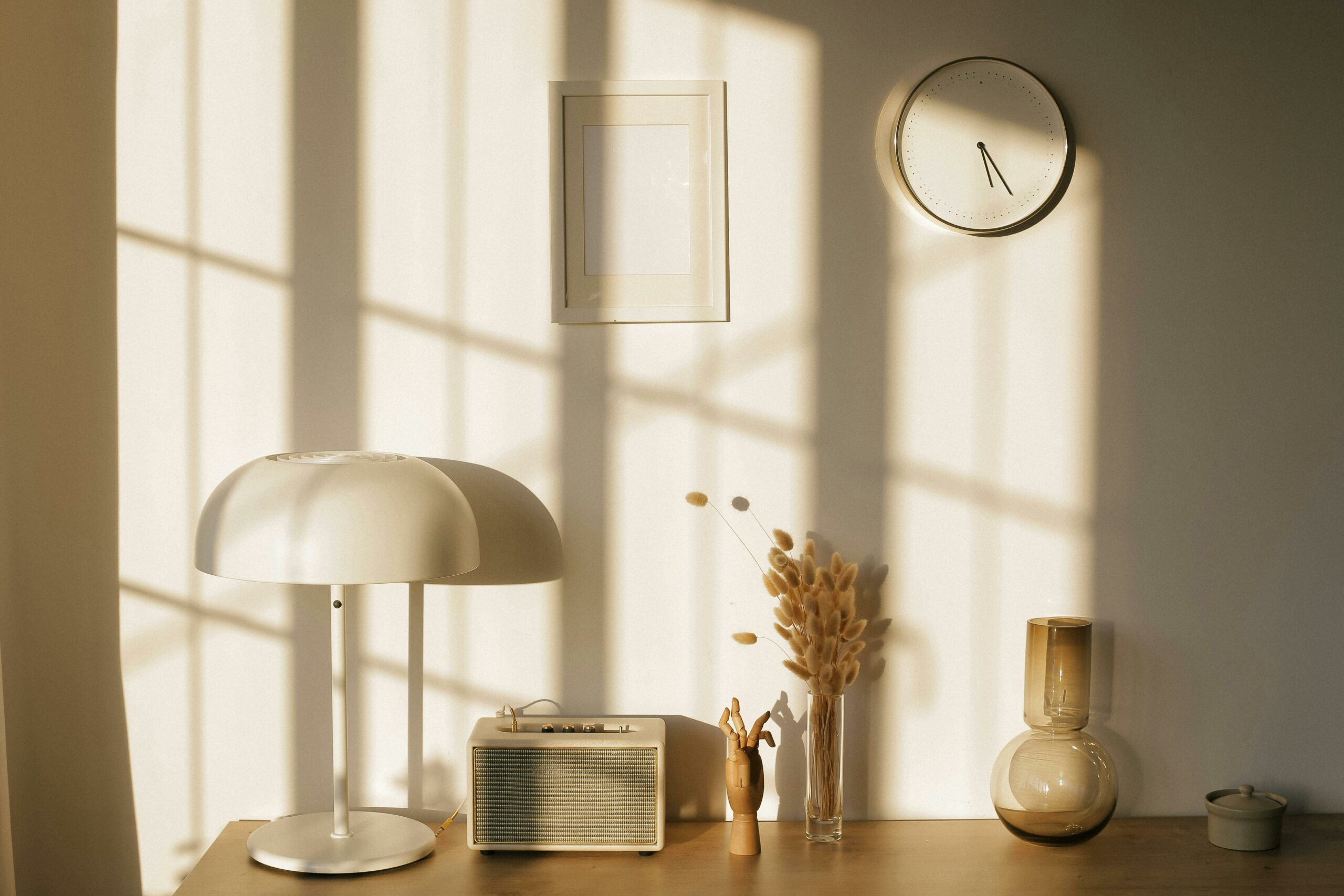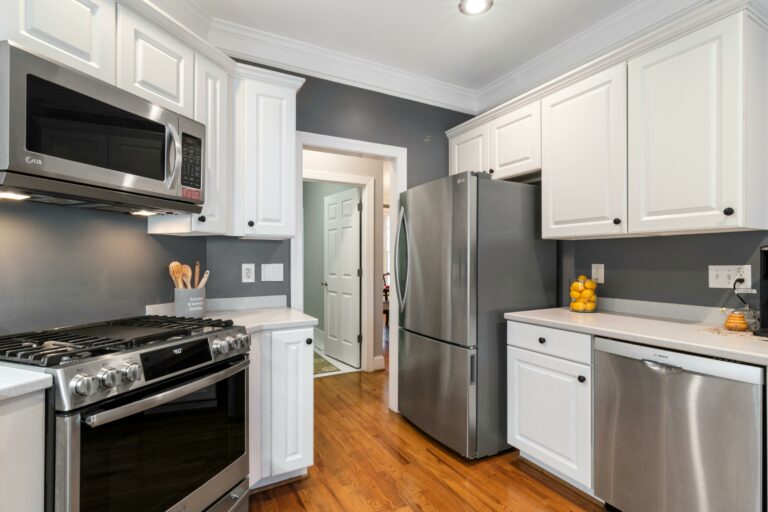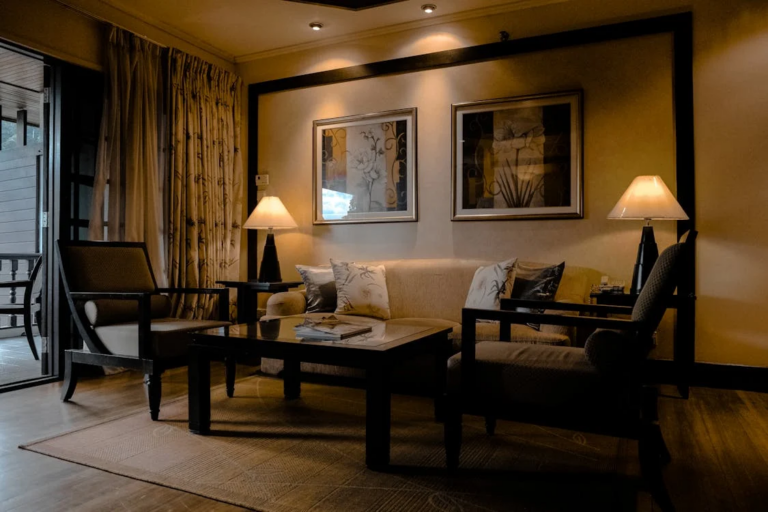The Power of Lighting: The Role of Lighting in Architecture
Lighting is often overlooked when it comes to home design, but its impact on the overall aesthetic and atmosphere of a space should not be underestimated. The right lighting has the power to enhance the architecture of your home, making it feel more inviting, highlighting its unique features, and creating a warm and welcoming ambiance.
When thoughtfully designed and strategically placed, lighting can transform a space, accentuating architectural elements and drawing attention to the details that make your home truly special. Additionally, proper lighting can increase visibility, ensuring that every area of your home is well-lit and functional.
In this article, we will explore the role of lighting in architecture and provide you with practical strategies for using lighting to enhance the architectural design of your home. We will also delve into the relationship between lighting and home aesthetics, and discuss the environmental and energy considerations when choosing lighting options.
So, if you’re ready to unlock the full potential of your home’s architecture through the power of lighting, let’s dive in!
Table of Contents
Understanding the Role of Lighting in Architecture
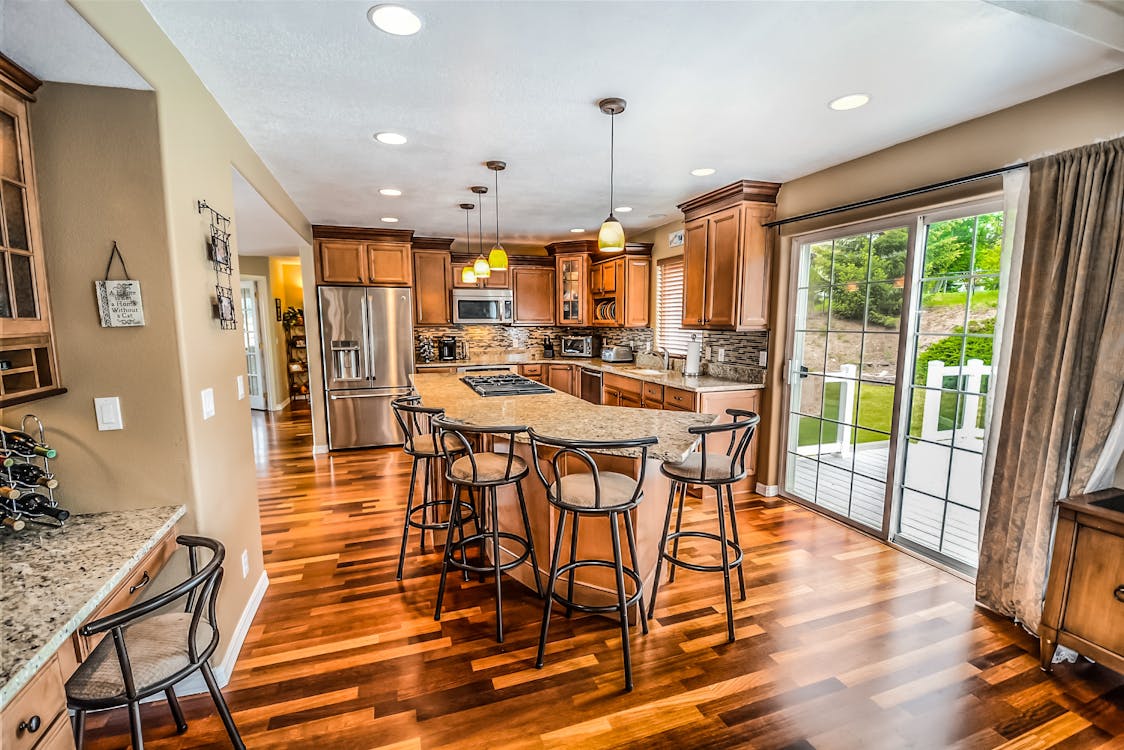
The role of lighting in architecture is not just about the physical structure of a building; it’s about creating a space that is visually appealing and functional. One essential element that plays a crucial role in achieving this is lighting. Whether you’re designing a residential home, a commercial space, or a public building, the way you use lighting can make or break the overall atmosphere and functionality of the space.
Highlighting Features
The role of lighting in architecture goes beyond simply providing illumination; it can be used strategically to highlight specific architectural features and elements. By using different lighting techniques, architects can draw attention to particular areas or elements of a space, creating visual interest and guiding the viewer’s gaze.
- Accent lighting can be used to highlight unique architectural details such as arched doorways, columns, or intricate ceiling designs.
- Wall washing can be employed to emphasize the texture and materiality of walls, creating a sense of depth and dimension.
- Cove lighting can be used to outline the edges of a space, adding a touch of elegance and enhancing the overall aesthetics.
By carefully considering the architectural elements that deserve special attention. The role of lighting in architecture is to elevate the overall design and create a captivating visual experience for occupants and visitors.
Increasing Visibility
In addition to accentuating architectural features, lighting also serves a practical purpose by increasing visibility within a space. A well-lit environment not only enhances safety but also improves functionality and usability.
- In commercial spaces such as offices or retail stores, proper lighting is crucial for employees and customers to navigate the space and carry out their tasks comfortably.
- In residential homes, lighting design needs to take into account the different activities that take place in different rooms, such as reading, cooking, or entertaining. Adequate lighting can ensure that these activities are carried out effectively and efficiently.
Architects need to consider the type and intensity of lighting required in each area of a building to optimize visibility and create a well-lit environment that meets the needs of the occupants.
Creating Ambience
The role of lighting in architecture extends beyond functionality and aesthetics. Lighting can also contribute to creating a specific mood or ambience within a space. The careful selection of light fixtures, color temperatures, and lighting controls can drastically alter the atmosphere and evoke different emotions.
- Warm, soft lighting can create a cozy and intimate atmosphere, perfect for lounges, restaurants, or bedrooms.
- Bright, cool lighting can create a vibrant and energetic atmosphere, ideal for offices, retail spaces, or fitness centers.
- Dramatic lighting effects, such as uplighting or downlighting, can be used to create a sense of drama and intrigue, suitable for theaters, art galleries, or museums.
By using lighting as a tool to manipulate the atmosphere, architects can enhance the experience of occupants and visitors, immersing them in a space that reflects the intended mood or ambiance.
In conclusion, lighting plays a multifaceted role in architecture, going beyond mere illumination. It has the power to highlight architectural features, increase visibility, and create a specific ambience. By understanding and harnessing the potential of lighting, architects can transform a space into an immersive and visually stunning environment that meets the needs and desires of its occupants.
Principles of lighting in architecture

Architectural lighting plays a crucial role in enhancing the aesthetics and functionality of any space. It has the power to transform a mundane area into a captivating environment, evoking certain moods and creating memorable experiences. To ensure that lighting design is both effective and impactful, there are several guiding principles that architects and lighting designers follow. In this article, we will explore three key principles that contribute to the success of architectural lighting: the layering of light, the appropriate use of light, and the consideration of natural light.
Layering of Light
One of the most fundamental principles of lighting in architecture is the layering of light. It involves using multiple light sources at different levels and positions to create depth, dimension, and visual interest in a space. By incorporating various types of lighting, such as ambient, task, and accent lighting, architects can achieve a balanced and harmonious lighting scheme.
Here are a few key points to consider when implementing the layering of light:
- Ambient lighting: Provides overall illumination and sets the mood for the space. Common ambient lighting sources include chandeliers, recessed lights, and wall-mounted fixtures.
- Task lighting: Serves a specific purpose and aids in performing specific activities. Examples of task lighting include desk lamps, under-cabinet lights, and reading lights.
- Accent lighting: Draws attention to specific architectural features or objects within a space, creating focal points. Track lights, wall sconces, and picture lights are commonly used for accent lighting.
By strategically combining these different layers of light, architects can create a visually dynamic environment, highlighting key elements and enhancing the overall ambiance.
Appropriate Use of Light
The appropriate use of light is a crucial principle to consider when designing architectural lighting. It involves understanding the purpose of the space and tailoring the lighting design to fulfill its specific requirements. Different areas have varying lighting needs, and architects must carefully consider factors such as functionality, mood, and user experience.
Here are a few examples of the role of lighting in architecture design:
- Restaurants: Soft, warm lighting creates a cozy and intimate atmosphere, while focused lighting on tables enhances the dining experience.
- Retail stores: Bright, well-distributed lighting helps showcase merchandise and stimulate customer interest, while accent lighting can draw attention to specific products or displays.
- Offices: A combination of ambient and task lighting is essential for a productive workspace, providing sufficient illumination for general tasks and focused lighting for reading and computer work.
By understanding the purpose of the space and considering the needs of its occupants, architects can create lighting designs that enhance the function and atmosphere of any environment.
Consideration of Natural Light
In addition to artificial lighting, the consideration of natural light plays a significant role in architectural lighting design. Natural light not only provides illumination but also connects the interior of a building with the outside world, creating a sense of harmony and well-being.
Here are some key aspects to consider the role of lighting in architecture design:
- Orientation: Understanding the path of the sun and how it interacts with the building can help architects determine the placement and size of windows, skylights, and other openings to optimize natural light.
- Glazing and shading: Choosing the right glazing materials and implementing appropriate shading devices, such as blinds or curtains, can control the amount of natural light entering the space and prevent glare or excessive heat gain.
- Light harvesting: Incorporating design elements that allow for the diffusion and distribution of natural light, such as light wells or light tubes, can maximize the use of natural light throughout the building.
By carefully considering the integration of natural light into architectural lighting design, architects can create spaces that are not only visually pleasing but also promote well-being and energy efficiency.
In conclusion, the layering of light, the appropriate use of light, and the consideration of natural light are essential guiding principles in creating effective architectural lighting designs. By incorporating these principles into their designs, architects can transform spaces into captivating environments that evoke specific emotions, enhance functionality, and create memorable experiences for their occupants.
Enhancing the role of lighting in architecture
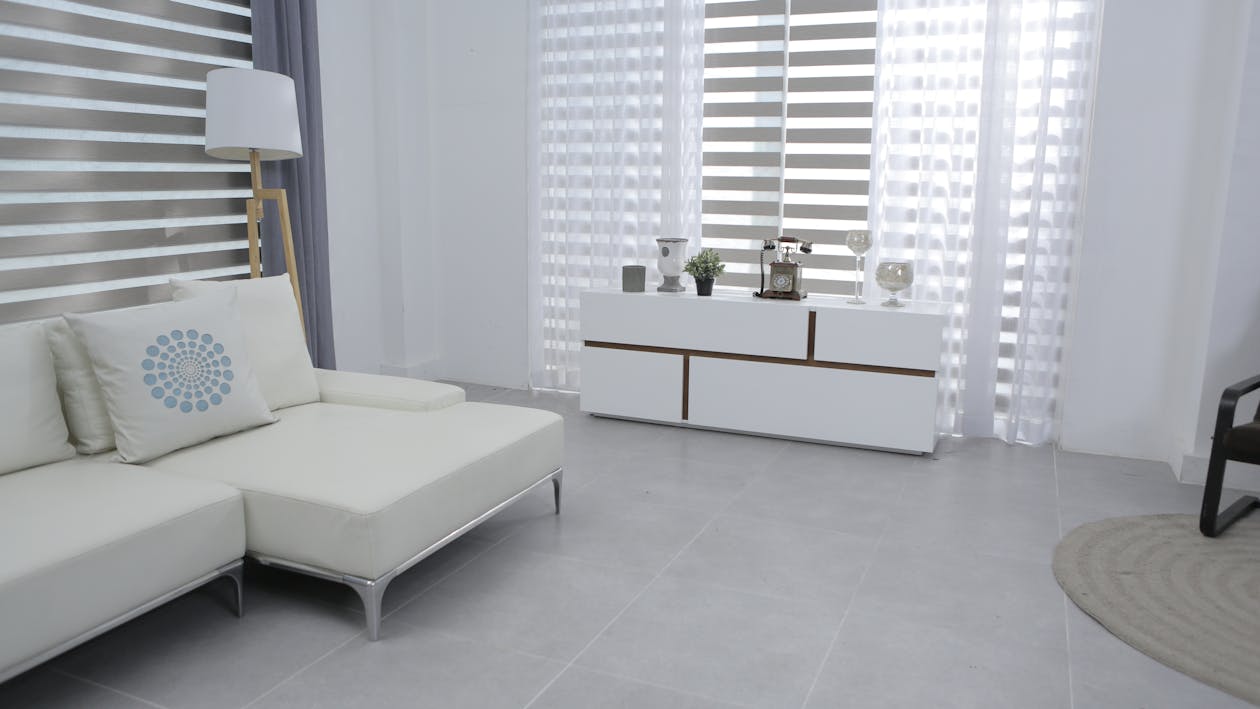
When it comes to home architecture, lighting is a crucial element that often gets overlooked. However, with the right lighting strategies, you can transform your space and highlight its unique architectural features. Whether you want to create a dramatic focal point or add a soft glow, lighting can make all the difference. In this article, we will explore three strategies for enhancing your home architecture using lighting: focused lighting, indirect lighting, and backlighting.
Focused Lighting to Highlight Architectural Details
One effective way to enhance your home architecture is by using focused lighting to highlight specific architectural details. Whether it’s an ornate carving, a textured wall, or an impressive art piece, a carefully positioned spotlight can draw attention to these features and create a sense of drama.
Here are a few tips for using focused lighting in architecture
- Positioning: Place the spotlight or track lighting fixture in a way that directs the light onto the desired architectural element. Experiment with different angles to find the best positioning.
- Intensity: Adjust the intensity of the light to ensure that the architectural detail is well illuminated without being overpowering.
- Layering: Combine focused lighting with ambient lighting to create an overall balanced and visually appealing effect.
By using focused lighting, you can highlight the unique architectural details of your home and create a captivating visual experience for anyone who enters the space.
Indirect Lighting for a Soft Glow
Indirect lighting is another strategy that can enhance your home architecture by creating a soft and inviting atmosphere. This type of lighting involves bouncing light off surfaces such as walls or ceilings to create a subtle, diffused glow.
Here’s how you can incorporate indirect lighting in architecture:
- Wall Washers: Install wall washer lights along the base of a wall to create a gentle wash of light that spreads evenly across the surface. This technique can visually enlarge a room and highlight the texture of the walls.
- Cove Lighting: Use cove lighting to illuminate the ceiling or upper walls. This hidden lighting technique provides a soft, ambient glow and can accentuate architectural features such as arches or tray ceilings.
- Lighting Fixtures: Choose lighting fixtures with diffusers or shades that soften the light and create a warm and inviting atmosphere.
Indirect lighting can add depth and dimension to your home architecture, creating a cozy and welcoming environment that complements the overall design.
Backlighting to Create Contrast and Shadows
Backlighting is an innovative technique that can create a visual contrast and add depth to your home architecture. By placing lighting fixtures behind architectural elements, you can create striking silhouettes and cast intriguing shadows.
Here’s how you can use back lighting in architecture:
- Accentuating Shapes: Use backlighting to accentuate the unique shapes and outlines of architectural features such as columns, sculptures, or decorative screens.
- Dramatic Effects: Backlighting can create a dramatic effect by casting shadows on a textured wall or highlighting intricate patterns in glass or metalwork.
- Outdoor Spaces: Backlighting is not limited to indoor spaces; it can also be used to enhance the architecture of your outdoor areas. Illuminate trees, shrubs, or architectural details in your garden or patio with strategically placed outdoor lighting.
By incorporating backlighting into your home, you can create visually stunning effects that showcase the architectural beauty of your space.
In conclusion, lighting plays a vital role in enhancing your home architecture. Whether you choose to use focused lighting, indirect lighting, or backlighting, each strategy offers a unique way to showcase and highlight the architectural features of your home. Experiment with different lighting techniques and positions to find the perfect balance that elevates the design of your space. With the right lighting strategies, you can create a truly captivating environment that showcases the beauty of your home architecture.
Also Read : Creating Ambiance with Minimalist Lighting Ideas for 2024
The Relationship between Lighting and Home

The role of lighting in architecture have a significance in shaping the overall aesthetics of a home. It has the power to create a warm and inviting atmosphere or a cool and contemporary vibe. From the color perception to the perception of space, lighting has a profound impact on how we perceive and experience our surroundings. In this article, we will explore the various ways in which lighting influences home aesthetics and why it is crucial to consider lighting as an integral part of your interior design.
Role of Lighting in Home Decor
When it comes to home decor, lighting is often an overlooked aspect. Many people focus on furniture, color schemes, and accessories, but neglect the importance of lighting in creating the desired ambiance.
Here are some crucial roles played by lighting in architecture:
- Setting the Mood: Lighting can create different moods and atmospheres in different areas of the home. Soft, warm lighting in the living room can create a cozy and intimate setting, while bright, white lighting in the kitchen can enhance productivity and focus.
- Highlighting Architectural Features: Well-placed lighting can draw attention to architectural features such as artwork, sculptures, or statement pieces. It can act as a spotlight, emphasizing the unique elements of your home.
- Enhancing Visual Appeal: The right lighting fixtures can add a touch of elegance and visual appeal to any space. Whether it’s a chandelier in the dining room or pendant lights in the kitchen, lighting fixtures can serve as both functional and decorative elements.
Impact of Lighting on Color Perception
Lighting significantly affects our perception of color. The color temperature and intensity of light can alter how we perceive colors, making them appear warmer, cooler, brighter, or muted. Here’s how lighting impacts color perception:
- Color Temperature: Different light sources emit light with different color temperatures. For example, incandescent bulbs produce warm light, while LED bulbs can emit warm, cool, or daylight tones. The color temperature of light can affect how colors are perceived in a room. Warm light can make colors appear richer and cozier, while cool light can make colors appear crisper and more vibrant.
- Color Rendering Index (CRI): CRI refers to how accurately a light source can render colors compared to natural daylight. A higher CRI means that colors will appear more vibrant and true to their original tones. It is important to consider the CRI of the light sources used in your home to ensure that the colors of your decor items and furnishings are showcased properly.
Influence of Light on Space Perception
Lighting can also impact our perception of space within a room. It has the ability to make a room feel larger, smaller, more open, or confined. Here’s how lighting affects space perception:
- Natural Light: Maximizing natural light through windows, skylights, or glass doors can make a room feel more spacious and open. It creates a seamless transition between indoor and outdoor spaces, blurring the boundaries and making the room appear larger.
- Artificial Lighting: Strategic placement of artificial lighting can also create an illusion of space. By highlighting certain areas of a room with task lighting or using indirect lighting techniques such as cove lighting or uplighting, you can visually expand the perceived boundaries of a space.
In conclusion, lighting plays a vital role in home aesthetics, influencing the overall ambiance, color perception, and space perception. By carefully considering the lighting design and selecting the right fixtures and bulbs, you can create a visually stunning and inviting home environment. So, next time you are designing or redecorating your home, don’t forget to give lighting the attention it deserves.
Environmental and Energy Considerations of Lighting

Lighting plays a significant role in our lives, offering both practical and aesthetic benefits. However, it’s essential to consider the environmental and energy implications of the lighting choices we make. By opting for energy-saving lighting systems and environmentally friendly light choices, we can minimize our impact on the planet and reduce energy consumption.
Energy-Saving Lighting Systems
One way to mitigate the environmental impact of lighting is by embracing energy-saving lighting systems. These innovative technologies are designed to reduce energy consumption while still providing ample illumination. Here are some popular options:
- LED Lighting: LED (Light Emitting Diode) lighting has revolutionized the lighting industry. LEDs use significantly less energy than traditional incandescent or fluorescent bulbs and have a longer lifespan. Switching to LED bulbs can lead to substantial energy savings and lower electricity bills.
- Compact Fluorescent Lamps (CFLs): CFLs are another energy-efficient lighting option. Compared to incandescent bulbs, CFLs consume much less energy and last longer. They also emit less heat, making them a safer choice for enclosed spaces.
- Smart Lighting Systems: Smart lighting systems utilize advanced technology to optimize energy usage. These systems allow users to control the brightness and scheduling of their lights remotely through smartphone apps or voice commands. Dimming capabilities and occupancy sensors further enhance energy savings.
These energy-saving lighting systems offer a multitude of benefits. Not only do they conserve energy and reduce electricity costs, but they also have fewer maintenance requirements due to their extended lifespans. By incorporating these systems into our homes, offices, and public spaces, we can make a positive impact on the environment while enjoying well-lit spaces.
Environmentally Friendly Light Choices
In addition to energy-efficient systems, choosing environmentally friendly light sources is crucial for sustainability. Here are some eco-friendly lighting options to consider:
- Natural Light: Harnessing natural sunlight can significantly minimize the need for artificial lighting during the day. Utilize windows, skylights, and solar tubes to allow ample natural light to enter your spaces.
- Solar-Powered Lighting: Solar-powered lights are an excellent option for outdoor spaces like gardens and pathways. These lights absorb sunlight during the day and use stored energy to illuminate the area at night, reducing reliance on the electrical grid.
- Low-Voltage Lighting: Low-voltage lighting systems consume less energy than traditional high-voltage systems. By using low-voltage bulbs and fixtures, you can reduce energy consumption without compromising on illumination quality.
Incorporating these environmentally friendly light choices not only helps reduce energy consumption but also promotes a healthier and more sustainable way of living. Consider these options when designing or renovating spaces to create a greener and more eco-conscious environment.
In conclusion, by embracing energy-saving lighting systems and environmentally friendly light choices, we can contribute to a more sustainable future. These choices not only conserve energy and reduce environmental impact but also lead to cost savings and improved lighting quality. Let’s make conscious decisions about our lighting preferences for a brighter and greener world.
Conclusion
In conclusion, lighting plays a crucial role in enhancing your home’s architecture. By strategically incorporating different lighting techniques, you can highlight architectural features, increase visibility, and create the desired ambiance. The right lighting can transform the look and feel of your space, making it more aesthetically pleasing and inviting.
Whether you choose focused lighting to bring attention to architectural details, indirect lighting for a soft glow, or backlighting to create contrast and shadows, the possibilities are endless. The relationship between lighting and home aesthetics is undeniable, as it can significantly impact color perception and the way we perceive space.
It’s essential to consider environmental and energy considerations when selecting lighting systems. Opting for energy-saving lighting options and environmentally friendly choices can have a positive impact on both the planet and your energy bills.
At Arkitecture Today, we understand the power of lighting and its ability to transform your home. Check out our blog for more insights and inspiration on architecture, home, and interior design, as well as decoration ideas. Let us help you create a space that is not only visually stunning but also functional and comfortable.
Explore our blog to discover more about lighting and its impact on architecture and design.
Frequently Asked Questions
- How does lighting enhance a home’s architecture?Lighting enhances a home’s architecture by highlighting key features, creating depth and dimension, and setting the mood and ambiance of the space. It accentuates architectural details, such as arches, columns, and textures, and can make a space feel more spacious and inviting.
- What types of lighting fixtures are commonly used to illuminate architectural elements?Commonly used lighting fixtures to illuminate architectural elements include recessed lights, track lights, wall sconces, pendant lights, and uplights. Each fixture serves a different purpose and can be strategically placed to enhance specific architectural features.
- How can landscape lighting contribute to the enhancement of a home’s architecture?Landscape lighting can contribute to the enhancement of a home’s architecture by highlighting the exterior facade, pathways, and landscaping. It adds depth and visual interest to the overall design, creates a welcoming atmosphere, and improves the safety and security of the property.
- What are some tips for effective lighting in architecture design?Some tips for effective lighting in architecture design include: considering the architectural style and features of your home, using a combination of different lighting techniques for layering, avoiding harsh and direct lighting, and testing the lighting design to ensure it creates the desired visual impact.
- Is it necessary to hire a professional for llighting in architecture installation?While it’s possible to install lighting in architecture yourself, hiring a professional for the job is recommended. A professional will have the expertise to design and install a customized lighting system that complements your home’s architecture and meets your specific needs and preferences.

